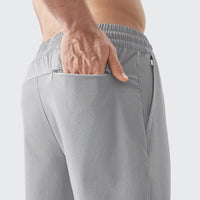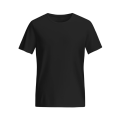Navigation
- Tip 1: Act Fast
- Tip 2: Use White Vinegar
- Tip 3: Try Baking Soda
- Tip 4: Employ Hydrogen Peroxide
- Tip 5: Ditch Chemicals for Natural Stain Removers
- Tip 6: Invest in Stain Repellent Shirts
- Conclusion
Stains are an inevitable part of life, and they can be a source of great frustration. From the dreaded red wine spill to the unavoidable inkblot, common stains can ruin our favorite shirts and leave us feeling defeated.
In a world where resourcefulness and sustainability are increasingly important, it's crucial to find practical solutions for stain removal that don't involve throwing away our clothing. This guide will provide you with five tips to remove stains effectively and introduce you to the game-changing world of stain repellent shirts.
Tip 1: Act Fast
The key to successful stain removal is acting quickly. The more challenging it is to remove a stain, the longer it remains on the cloth. When dealing with fresh stains, first, blot the excess liquid using a clean cloth or paper towel, applying gentle pressure to avoid pushing the stain deeper into the fabric. If the stain has dried, gently scrape off any solid residue with a blunt object, such as a spoon or the edge of a credit card.
By treating stains as soon as possible, you will increase your chances of removing them completely. For example, a fresh coffee spill can often be lifted from your shirt with just a bit of cold water, but if left untreated, it may become a permanent reminder of your morning mishap.

Tip 2: Use White Vinegar
White vinegar is a versatile and affordable stain remover. Its acidic nature helps to break down and lift stains from fabric fibers. To use white vinegar, mix equal parts vinegar and water, then apply the solution to the stain using a cloth or sponge. Let it sit for a few minutes before rinsing it with cold water. For tougher stains, such as red wine or berry juice, you can also try undiluted white vinegar.
White vinegar is particularly effective for removing stains from stain repellent shirts. Its gentle action helps preserve the fabric's stain-resistant properties, ensuring that your shirt remains looking new and fresh.
Tip 3: Try Baking Soda
Another common household item that works well to remove stains is baking soda. It functions as a mild abrasive and can aid in removing stains from textile fibers. Make a paste by combining baking soda and water in equal quantities to use it. At least 30 minutes should pass after applying the paste to the stain before rinsing with cold water. For tougher stains, you can also add a few drops of lemon juice to the paste.
Baking soda is a great option for stain repellent shirts, as its natural properties help maintain the shirt's protective layer while removing the stain.
Tip 4: Employ Hydrogen Peroxide
Hydrogen peroxide is a powerful stain remover, particularly for protein-based stains such as blood, sweat, and grass. To use hydrogen peroxide, dilute it with an equal amount of water and apply the solution to the stain. Let it sit for a few minutes, then rinse with cold water. Test the solution on an inconspicuous area of the fabric first, as hydrogen peroxide can bleach some colors.
Hydrogen peroxide is also effective on stain repellent shirts, helping to remove even the most stubborn stains without compromising the shirt's protective properties.
Tip 5: Ditch Chemicals for Natural Stain Removers
Chemical stain removers may be effective, but they can also be harsh on fabrics and harmful to the environment. Instead, opt for eco-friendly and natural alternatives that are gentler on your clothing and the planet. Examples of natural stain removers include lemon juice, which works well on rust stains, salt, which can help remove red wine stains, and sun exposure, which can help fade and remove stubborn stains over time.
Natural stain removers are a perfect match for stain repellent shirts, helping to maintain their stain-resistant properties while keeping your wardrobe sustainable and eco-friendly.
Tip 6: Invest in Stain Repellent Shirts
Though DIY stain removal works, stain repellent shirts treated with repellent coatings provide the most sustainable long-term solution. These clothes resist common stains from the start, reducing fabric wear and laundry needs. By extending the life of your favorite shirts, stain resistant clothing can help reduce textile waste and create a more sustainable wardrobe.

Conclusion
By following these six practical tips, especially the last one, you can effectively remove stains from your shirts and extend their lifespan. Embracing stain repellent shirts is a great way to create a more sustainable wardrobe, as these innovative garments are designed to resist and repel common stains, making them a valuable addition to any closet. By being resourceful in our everyday lives, we can make a positive impact on our environment and enjoy a wardrobe that stays looking fresh and clean for longer.

Read More
- Travel Essentials: Why You Need a Wrinkle-Free Polo Shirt in Your Suit
- Water-Resistant and Waterproof Fabrics: The Science Behind Staying Dry
- Silkysoft Touch T-Shirts: Ultra Comfort Redefined!
- Odorless Polo Shirts: Master the Art of Care & Boost Longevity Now!
- TexTale: Revolutionizing Mature Men's Essentials with Craftsmanship






























